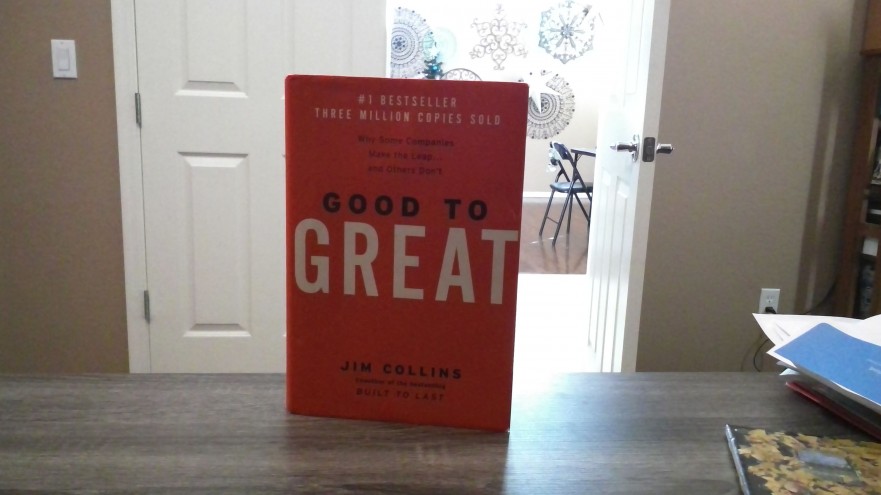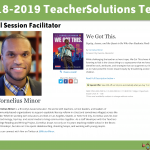National Board score releases have come and gone and I was relieved to see the “Congratulations!” banner come across my screen. That was a sweet, sweet moment and I am thankful to all of those who helped and supported me along the way. The excitement has settled, we are back from Thanksgiving break, and I have recuperated from the flu bug my students so lovingly shared with me.
I recently became aware that things were a little off in my class, so I took a step back to do some observations. I noticed that my students were not needing me the way they were a few weeks ago. Many of them were moving into increased independence and work production with accuracy. They were managing themselves well. With a week before Winter Break, they were doing “good”. What a great time to change gears and begin the move to “great”.
The book Good to Great (Jim Collins) is a personal favorite that I try to read annually. It is a research based analysis of why some companies were able to move from being “good” to being “great”. The result was not a program, but commonalities seen across agencies regarding their leadership and choices. The identified principles can translate to pretty much any organization involving people.
In the article ‘Good to Great’ author: How to have great schools (eSchool News, 2013), Collins applies these concepts to schools to identify common characteristics amongst those that were able to shift from being a “good” school to being a “great” one. His research found that the determining factor was the leader, aka Principal. The Principals that made the shift were Level 5 Leaders and had Disciplined Thought and Actions.
Level 5 Leadership incorporates some unique features that you can study from the book, or learn more about on his website. Disciplined Thought and Actions requires the ability to:
- confront the “brutal facts” yet remain “unwavering” in your belief that the goal or vision is achievable by the students, teachers, and families in your school.
- know what to change, what to keep, and sticking with it long enough to see results.
Although I am not a Principal, I am the captain of my class, so I decided to apply those same concepts to myself as a teacher. Collins proposal was made to Superintendents wanting to make the shift in their schools. I modified those questions to be more appropriate for classroom teachers. If you are interested, join me in starting the shift by truthfully answering the following questions:
- Do you have the Level 5 will to make the move? (you may need to research Level 5 Leadership first)
- Are your key human resources (ie Leadership, Support Staff) Level 5 Leaders? If not, are you willing to make changes to link yourself and your class to Level 5 Leaders in their areas of expertise?
- What are the “brutal facts” of your situation? In addition to gathering data from testing, consider including data from surveys, observations, and videotaping.
- What is your “Big Hairy Audacious Goal” (BHAG)? This is a goal that is clearly defined, yet “profound enough to change the lives of every student in your [class]” should you succeed.
- What are your non-negotiable targets that will get your class to your BHAG? What are you willing to do to get your class to that target goal every time for the next week? Month? Quarter? Semester?
- What is the right 20 percent to change about your own class (including yourself, if appropriate)—and why?
My BHAG is for ALL of my students to be proficient grade level readers by the end of the school year. I currently have 36 students in a multigrade class (1,2,3) with a variety of needs, abilities, and strengths. We have made growth, but we are not yet there. I do not yet know my plan nor do I have an answer for all of the qestions…yet. But, I do have a Level 5 will and I believe I am ready to do what is needed to make the move from “good” to “great”.
How about you?










Comments 1
Hi Yolanda.I also try to read “Good to Great every so often. I enjoyed your ideas on applying his principles to your class. I hope it works!